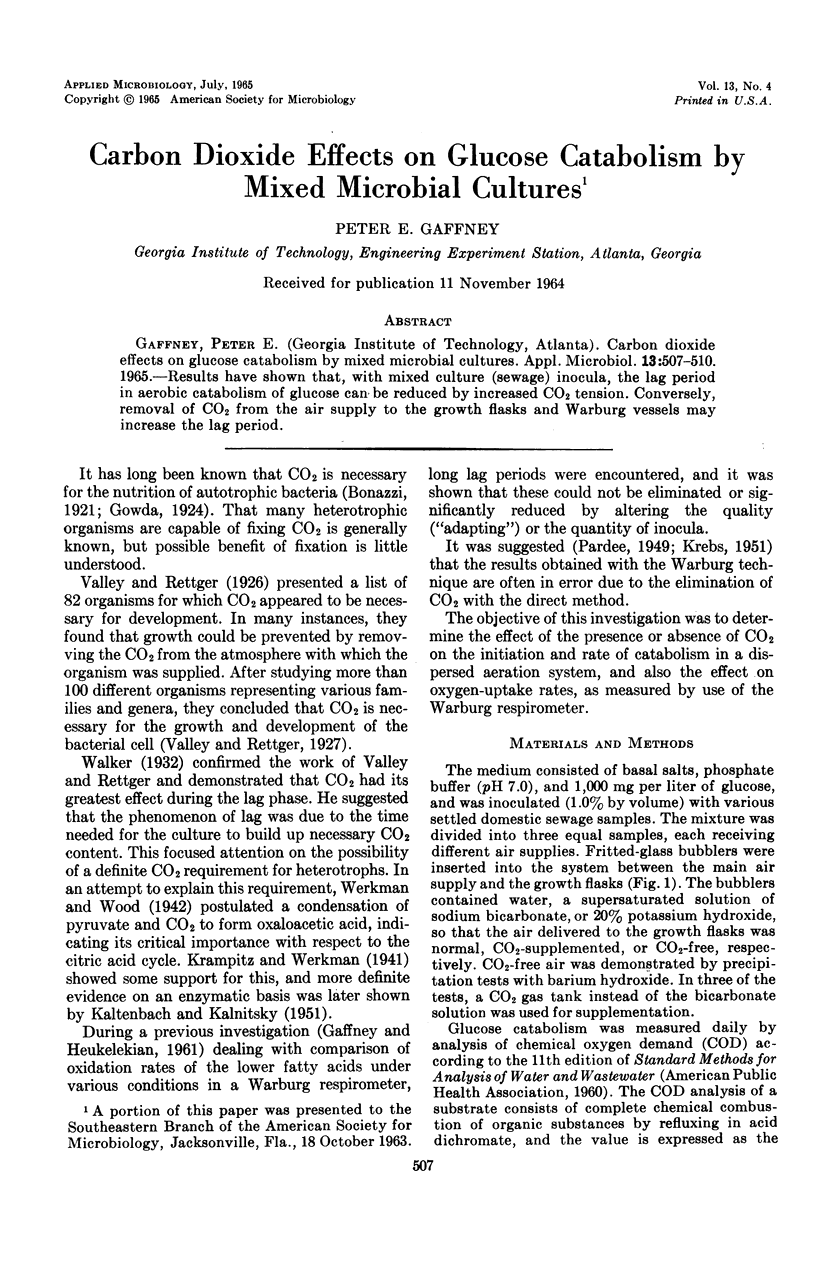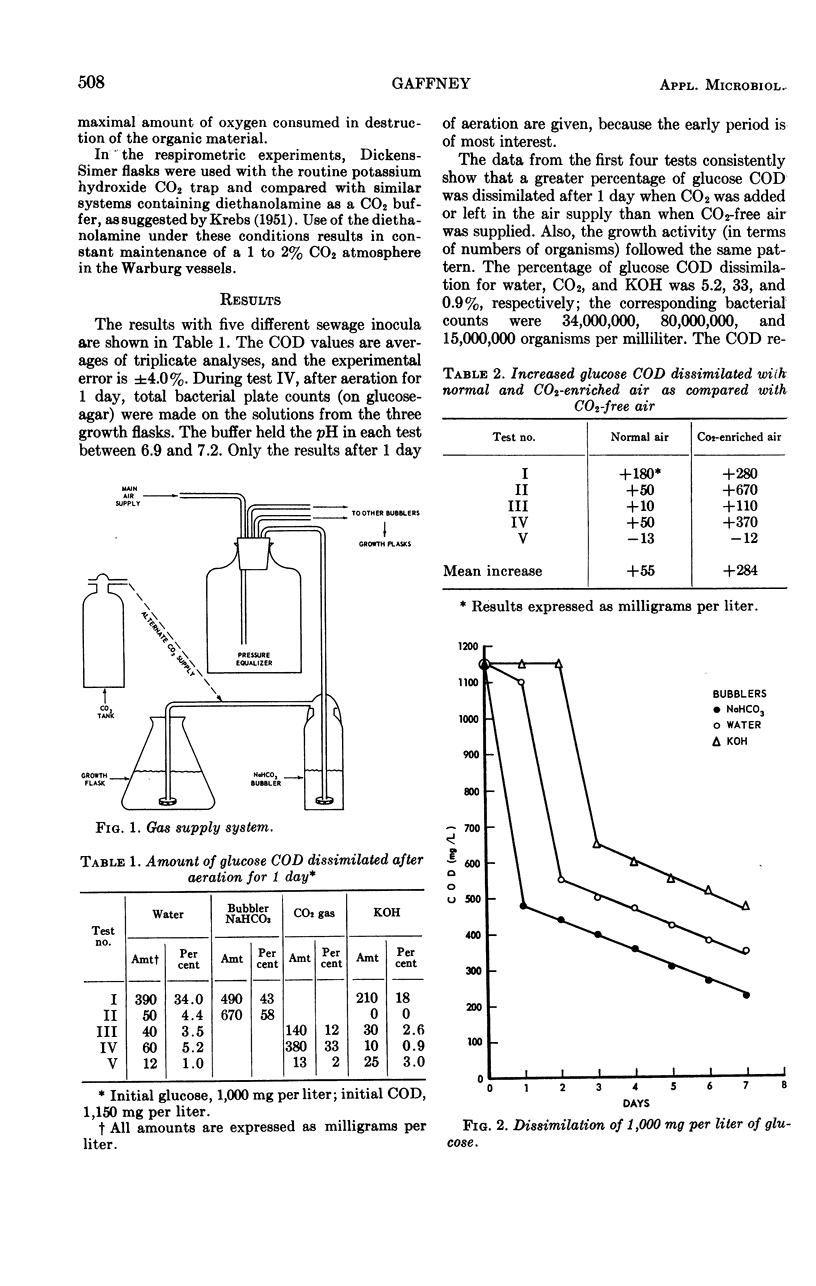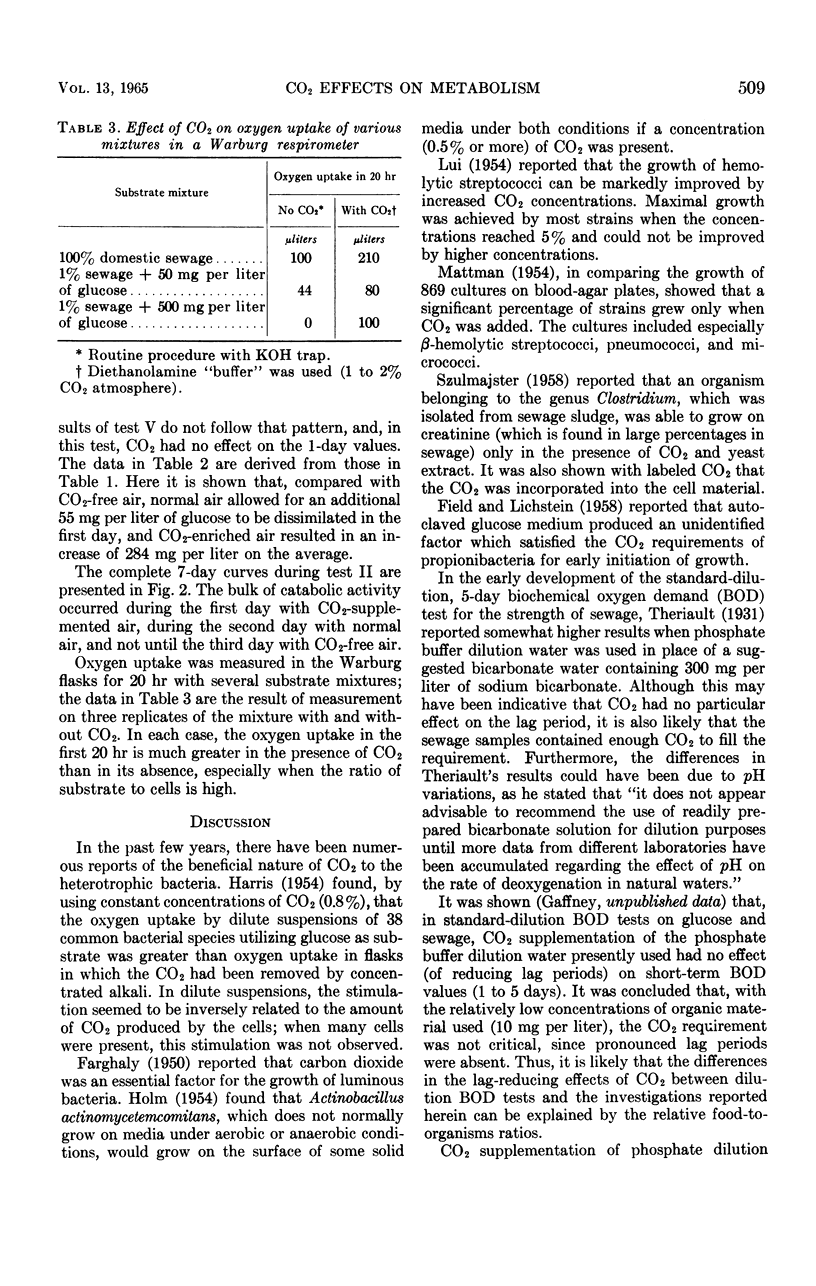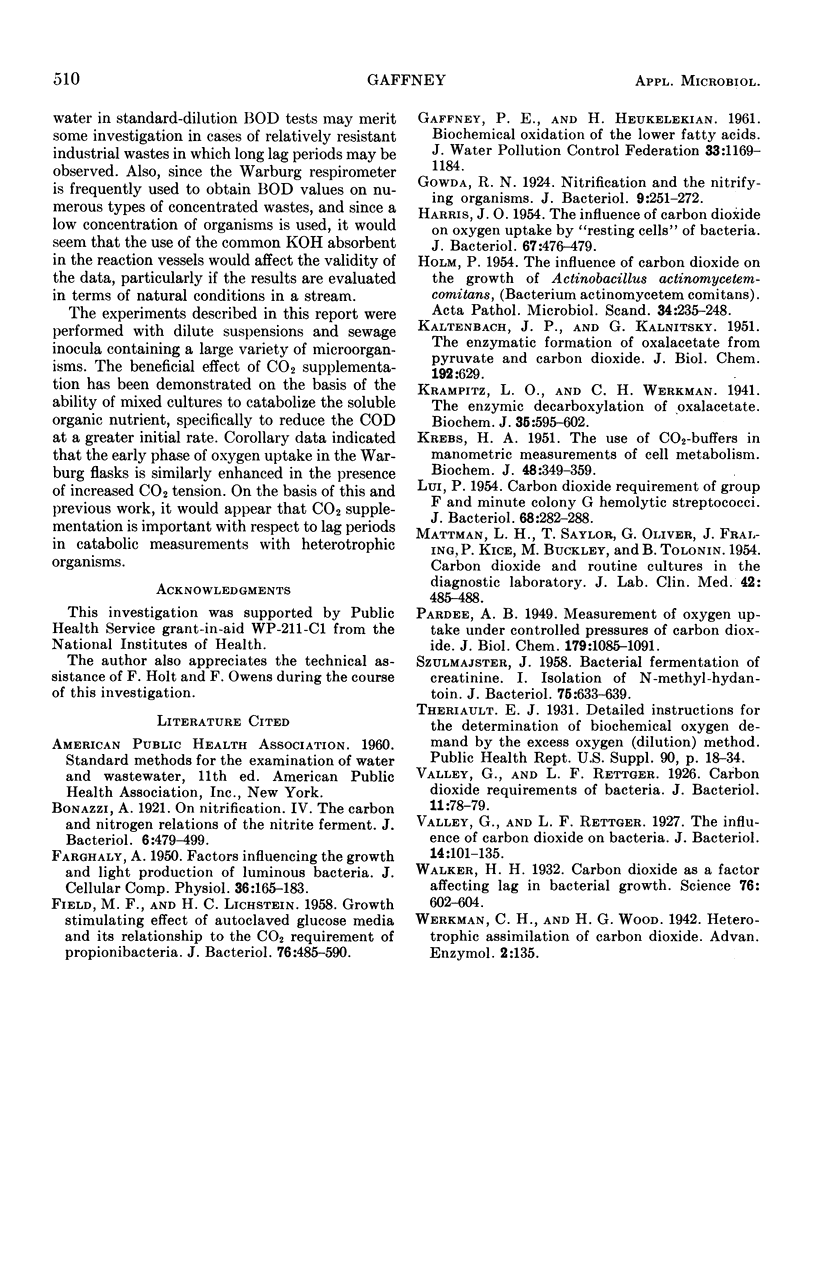Abstract
Results have shown that, with mixed culture (sewage) inocula, the lag period in aerobic catabolism of glucose can be reduced by increased CO2 tension. Conversely, removal of CO2 from the air supply to the growth flasks and Warburg vessels may increase the lag period.
Full text
PDF



Selected References
These references are in PubMed. This may not be the complete list of references from this article.
- Bonazzi A. On Nitrification: IV. The Carbon and Nitrogen Relations of the Nitrite Ferment. J Bacteriol. 1921 Sep;6(5):479–499. doi: 10.1128/jb.6.5.479-499.1921. [DOI] [PMC free article] [PubMed] [Google Scholar]
- FARGHALY A. H. Factors influencing the growth and light production of luminous bacteria. J Cell Physiol. 1950 Oct;36(2):165–183. doi: 10.1002/jcp.1030360205. [DOI] [PubMed] [Google Scholar]
- FIELD M. F., LICHSTEIN H. C. Growth stimulating effect of autoclaved glucose media and its relationship to the CO2 requirement of propionibacteria. J Bacteriol. 1958 Nov;76(5):485–490. doi: 10.1128/jb.76.5.485-490.1958. [DOI] [PMC free article] [PubMed] [Google Scholar]
- Gowda R. N. NITRIFICATION AND THE NITRIFYING ORGANISMS. I. J Bacteriol. 1924 May;9(3):251–272. doi: 10.1128/jb.9.3.251-272.1924. [DOI] [PMC free article] [PubMed] [Google Scholar]
- HARRIS J. O. The influence of carbon dioxide on oxygen uptake by resting cells of bacteria. J Bacteriol. 1954 Apr;67(4):476–479. doi: 10.1128/jb.67.4.476-479.1954. [DOI] [PMC free article] [PubMed] [Google Scholar]
- HOLM P. The influence of carbon dioxide on the growth of Actinobacillus actinomycetemcomitans (Bacterium actinomycetem comitans Klinger 1912. Acta Pathol Microbiol Scand. 1954;34(3):235–248. doi: 10.1111/j.1699-0463.1954.tb00821.x. [DOI] [PubMed] [Google Scholar]
- KALTENBACH J. P., KALNITSKY G. The enzymatic formation of oxalacetate from pyruvate and carbon dioxide. J Biol Chem. 1951 Oct;192(2):629–639. [PubMed] [Google Scholar]
- KREBS H. A. The use of 'CO2 buffers' in manometric measurements of cell metabolism. Biochem J. 1951 Mar;48(3):349–359. doi: 10.1042/bj0480349. [DOI] [PMC free article] [PubMed] [Google Scholar]
- Krampitz L. O., Werkman C. H. The enzymic decarboxylation of oxaloacetate. Biochem J. 1941 Jun;35(5-6):595–602. doi: 10.1042/bj0350595. [DOI] [PMC free article] [PubMed] [Google Scholar]
- LIU P. Carbon dioxide requirement of group F and minute colony G hemolytic streptococci. J Bacteriol. 1954 Sep;68(3):282–288. doi: 10.1128/jb.68.3.282-288.1954. [DOI] [PMC free article] [PubMed] [Google Scholar]
- MATTMAN L. H., SAYLOR T., OLIVER G., FRAILING J., SAWDON J., KICE P., BUCKLEY M., TOLONIN B. Carbon dioxide and routine cultures in the diagnostic laboratory. J Lab Clin Med. 1953 Sep;42(3):485–488. [PubMed] [Google Scholar]
- SZULMAJSTER J. Bacterial fermentation of creatinine. I. Isolation of N-methyl-hydantoin. J Bacteriol. 1958 Jun;75(6):633–639. doi: 10.1128/jb.75.6.633-639.1958. [DOI] [PMC free article] [PubMed] [Google Scholar]
- Valley G., Rettger L. F. THE INFLUENCE OF CARBON DIOXIDE ON BACTERIA. J Bacteriol. 1927 Aug;14(2):101–137. doi: 10.1128/jb.14.2.101-137.1927. [DOI] [PMC free article] [PubMed] [Google Scholar]
- Walker H. H. CARBON DIOXIDE AS A FACTOR AFFECTING LAG IN BACTERIAL GROWTH. Science. 1932 Dec 23;76(1982):602–604. doi: 10.1126/science.76.1982.602. [DOI] [PubMed] [Google Scholar]


